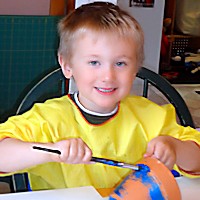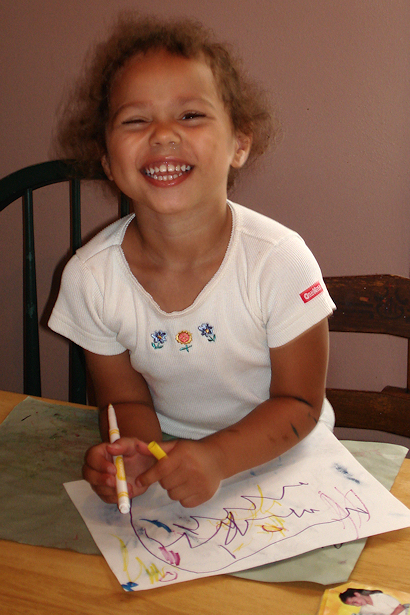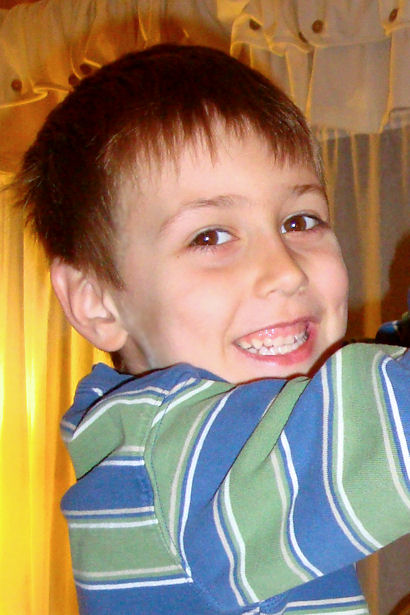 For children, art has no boundaries, no rules, no should-be. Children see nothing wrong with painting a purple cow or birds and hearts flying together across a pink sky.
For children, art has no boundaries, no rules, no should-be. Children see nothing wrong with painting a purple cow or birds and hearts flying together across a pink sky.
One day a child may fill the paper with splashes of bright color, then use only black or brown the next day. One day a child may experiment with small dots of color, then swipe wide swaths of paint across the paper the next day. Children’s art is fresh, from the heart, and full of ideas that jump right off the page.
Art is a child’s imagination captured for a brief moment, for all to see and celebrate.
Eventually children’s art becomes less imaginative and more realistic as they look around and start drawing the same way everyone else is drawing. Trees all have brown trunks on the bottom and green balls of leaves on top. The familiar house with a rectangular door in the middle triangular roof on top, and chimney with smoke billowing out appears. Fanciful birds become stylized letter Ms high in the sky.
But we can encourage our children not to give up their creativity. Parents, teachers, and other adults can encourage children’s creativity by providing new experiences and suppressing advice. Since children’s motor skills are still developing they often get frustrated trying to make the picture on the paper match the picture in their heads. When they ask “I can’t do it! Will you draw ___________ for me?” we’re given the perfect opportunity to say “I like the way your _____________ looks. If you keep practicing you’ll be able to draw it just like you want to.”
As children create they become so engrossed they sometimes have a hard time stopping. If you notice that your child is layering picture on top of picture and making the whole thing unrecognizable you may want to ask “Would you like another piece of paper?” It’s OK if your child says no and continues to “ruin” her picture. She is enjoying the process, which is more important than a “perfect” end product.
Even though it’s not easy, don’t give in to the temptation to offer advice. “Don’t you think the heart should be red?” and “Doesn’t the dog have a tail?” will be received as criticism. Children’s art should be a means of self expression, nothing more and nothing less. Children feel a great sense of accomplishment when they are able to share their deepest feelings and create something from nothing.
And we adults are lucky to have the privilege of seeing the world through our child’s eyes.









